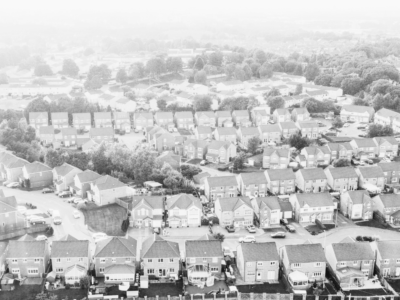New research has revealed which areas of the commercial real estate market are currently most in demand when it comes to the requirement for rental premises, as well as how this demand differs when dissecting the market on a regional basis.
Data was analysed on the current commercial rental market, looking at demand for commercial property based on the percentage of listings that had already been let across the five primary sectors.
The figures show that it’s a fairly close run race across the top four, with between a fifth and a quarter of all commercial lets listed on the market already taken by tenants.
Following two very tough pandemic years, it’s commercial retail rental properties that are currently most in demand.
26% of all commercial retail units currently listed on the market have already been let or had a let agreed on them.
London is driving this demand, where 39% of all retail rental properties have been snapped up, with demand also surpassing 30% in the East of England (32%) and the South East (31%).
Much like the retail sector, the leisure and hospitality space was also hit hard by pandemic restrictions.
However, it too appears to have bounced back, with demand for commercial rentals in the space (23%) the second highest of all sectors.
The East of England and South West are currently home to the highest demand for leisure and retail rental spaces.
Demand for industrial and warehouse space boomed during the pandemic, as the nation dramatically increased their consumption of goods online.
While this trend has since subsided as normality has returned, the sector remains home to the third highest level of rental demand for commercial spaces – again driven by the East of England and the East Midlands.
At 21%, demand for commercial land for development is also strong and nowhere more so than London.
With a shortage of space on which to develop, it’s no surprise that 41% of all plots have already been rented.
While the pandemic seems firmly behind us, it has left one legacy and that’s a higher propensity for many to work from home.
Hardly surprising then, that rental demand for office premises sits at just 7%.
Although this does climb somewhat in the East of England (17%), West Midlands (10%) and the South West, demand for commercial office space is some way off the pace set by the other sectors.
Founding Director, Almas Uddin of Revolution Brokers, the company behind the research, commented:
“When investing in any rental property there are a myriad of factors to consider from the initial investment cost, the rental income available, the length of void periods and the general demand for such properties.
The latter is particularly important and these considerations are no different when investing in commercial property.
What type of investment to make and where to make it can make a significant difference.
For example, while office spaces have traditionally been a safe bet due to high demand and tenant longevity, the post-pandemic landscape is now very different.”
| Table shows current commercial rental demand across each sector in Britain | |
| Sector | Current Rental Demand |
| Retail demand | 26% |
| Leisure / hospitality demand | 23% |
| Industrial / warehouse demand | 22% |
| Land / development demand | 21% |
| Office demand | 7% |
| Commercial Retail Sector | |
| Location | Current Rental Demand |
| London | 39% |
| East of England | 32% |
| South East | 31% |
| South West | 27% |
| West Midlands region | 24% |
| North West | 24% |
| East Midlands | 21% |
| Yorkshire and the Humber | 18% |
| Wales | 15% |
| Scotland | 13% |
| North East | 11% |
| England | 27% |
| Great Britain | 26% |
| Commercial Leisure and Hospitality Sector | |
| Location | Current Rental Demand |
| East of England | 39% |
| South West | 30% |
| South East | 30% |
| London | 27% |
| West Midlands region | 26% |
| Yorkshire and the Humber | 14% |
| North West | 13% |
| Wales | 13% |
| East Midlands | 13% |
| North East | 12% |
| Scotland | 10% |
| England | 24% |
| Great Britain | 23% |
| Commercial Industrial and Warehouse Sector | |
| Location | Current Rental Demand |
| East of England | 33% |
| East Midlands | 30% |
| South West | 25% |
| South East | 25% |
| West Midlands region | 21% |
| London | 19% |
| North West | 18% |
| Scotland | 14% |
| North East | 13% |
| Yorkshire and the Humber | 12% |
| Wales | 10% |
| England | 23% |
| Great Britain | 22% |
| Commercial Land and Development Sector | |
| Location | Current Rental Demand |
| London | 41% |
| South West | 38% |
| South East | 23% |
| West Midlands region | 21% |
| East Midlands | 19% |
| North West | 18% |
| Yorkshire and the Humber | 13% |
| Wales | 13% |
| North East | 13% |
| East of England | 11% |
| Scotland | 10% |
| England | 22% |
| Great Britain | 21% |
| Commercial Office Sector | |
| Location | Current Rental Demand |
| East of England | 17% |
| West Midlands region | 10% |
| South West | 10% |
| East Midlands | 9% |
| South East | 7% |
| London | 6% |
| North West | 6% |
| Yorkshire and the Humber | 6% |
| North East | 5% |
| Scotland | 3% |
| Wales | 3% |
| England | 8% |
| Great Britain | 7% |





















Comments